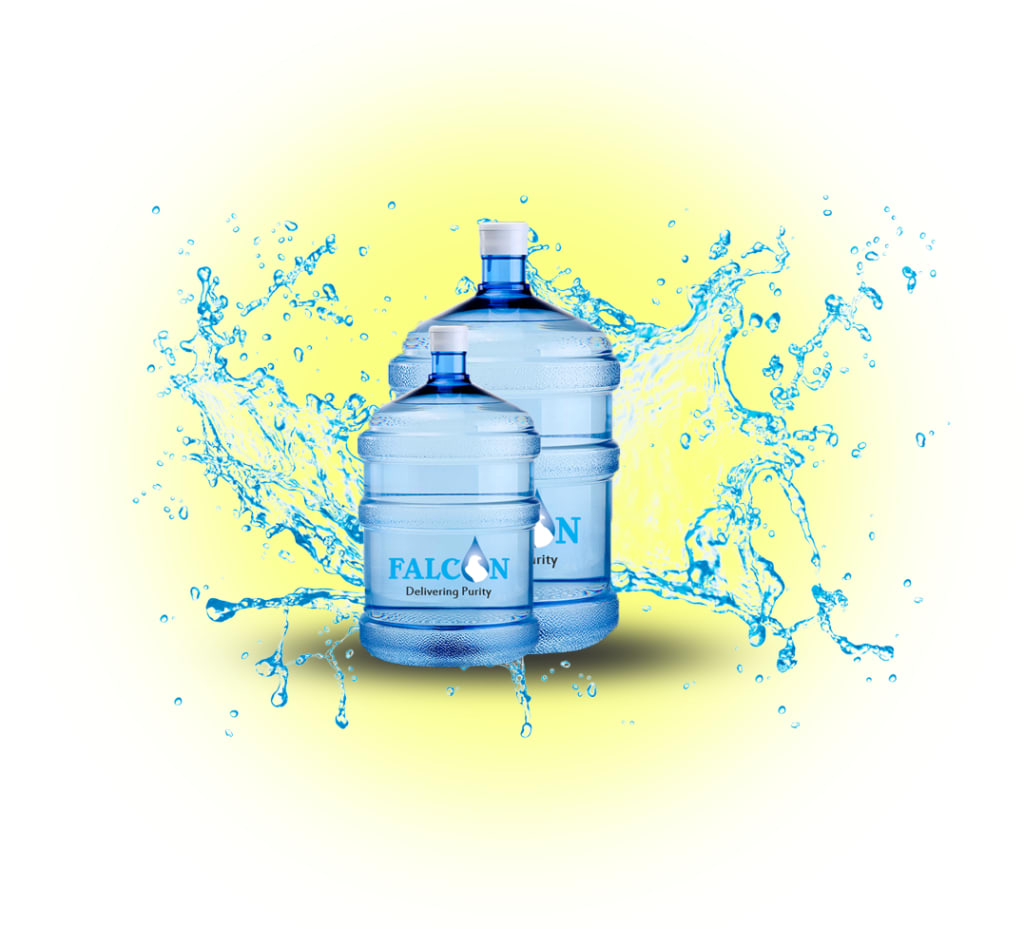Drinking Water Quality Standards
Falcon-Drinking Water Companies in Dubai

Introduction :
Drinking water is an essential component of a healthy lifestyle. It not only quenches our thirst but also plays a crucial role in maintaining our overall well-being. However, not all water is created equal. In this comprehensive guide, we will delve into the qualities that define good drinking water. From purity and taste to mineral content and pH level, understanding these qualities will empower you to make informed choices about the water you consume. So, let's explore the key attributes that make drinking water truly exceptional.
Purity :
One of the most critical qualities of good drinking water is purity. Pure water is free from harmful contaminants such as bacteria, viruses, chemicals, heavy metals, and pollutants. It undergoes rigorous purification processes to eliminate these impurities, ensuring its safety for consumption. Whether sourced from natural springs, treated by advanced filtration systems, or produced through reverse osmosis, the absence of contaminants is paramount for good drinking water.
Taste (100 words):
Good drinking water should have a clean, refreshing taste. While taste preferences vary from person to person, the absence of unpleasant flavors, odors, or aftertastes is generally indicative of high-quality water. Water that tastes pure and neutral enhances the overall drinking experience, making it more enjoyable and encouraging regular hydration.
Mineral Content :
An ideal drinking water possesses a balanced mineral content. Essential minerals like calcium, magnesium, potassium, and trace elements contribute to the overall nutritional value of water. These minerals not only provide taste but also support various bodily functions, such as maintaining bone health, regulating muscle contractions, and supporting nerve function. However, excessive mineral content can lead to hardness or other taste issues, so a good balance is key.
pH Level :
The pH level of water indicates its acidity or alkalinity. Good drinking water typically falls within a neutral range, around 7 on the pH scale. Neutral pH helps maintain the body's internal pH balance, supporting proper digestion and overall health. Extremely acidic or alkaline water may disrupt this balance, potentially causing digestive discomfort or mineral imbalances. Therefore, water with a balanced pH level is considered ideal for regular consumption.
Clarity and Transparency :
Another quality of good drinking water is clarity and transparency. Clear and transparent water indicates a lack of suspended particles or sediments, ensuring that it is visually appealing and aesthetically pleasing to drink. Water that appears cloudy, murky, or discolored may suggest the presence of impurities or sediments that should be addressed.
Testing the purity of drinking water is an important step in ensuring its safety and quality. While a comprehensive water analysis should be conducted by a professional laboratory for a detailed assessment, there are some simple tests you can perform at home to get a general idea of water purity. Here are a few common methods to test drinking water purity:
Visual Inspection:
Observe the water for any visible impurities. Pure water should be clear and transparent. Cloudiness, discoloration, or floating particles may indicate the presence of contaminants or sediments.
Taste and Odor Evaluation:
Take a small sip of the water and assess its taste and odor. Pure water should have a neutral taste and odor. Unpleasant tastes, such as a metallic, chlorine-like, or earthy flavor, might suggest the presence of impurities.
pH Test:
Using pH test strips or a digital pH meter, measure the pH level of the water. Pure water usually has a pH around 7, which is considered neutral. Extremely low or high pH values may indicate acidic or alkaline water, respectively, which can affect taste and potentially indicate mineral imbalances.
Chlorine Test:
Chlorine is often used as a disinfectant in municipal water supplies. Test the water for chlorine using chlorine test strips or a chlorine testing kit. Ideally, chlorine levels should be low or undetectable in drinking water, as high levels can affect taste and potentially have health implications.
Total Dissolved Solids (TDS) Test:
A TDS meter can measure the concentration of dissolved substances in the water. It provides an estimate of the overall mineral content in the water. Higher TDS values might indicate the presence of minerals, salts, or other dissolved solids. While some minerals are beneficial, excessively high TDS levels may affect taste or indicate contamination.
It's important to note that these home tests provide only a preliminary assessment and cannot replace a professional water analysis. If you have concerns about the purity of your drinking water, it's recommended to contact a certified laboratory for a comprehensive evaluation or reach out to your local water utility for information about water quality reports.
Remember, ensuring the purity of drinking water is crucial for maintaining good health. If you have any doubts or suspect contamination, it's always best to seek professional guidance and take appropriate measures to ensure the safety of your drinking water.





Comments
There are no comments for this story
Be the first to respond and start the conversation.